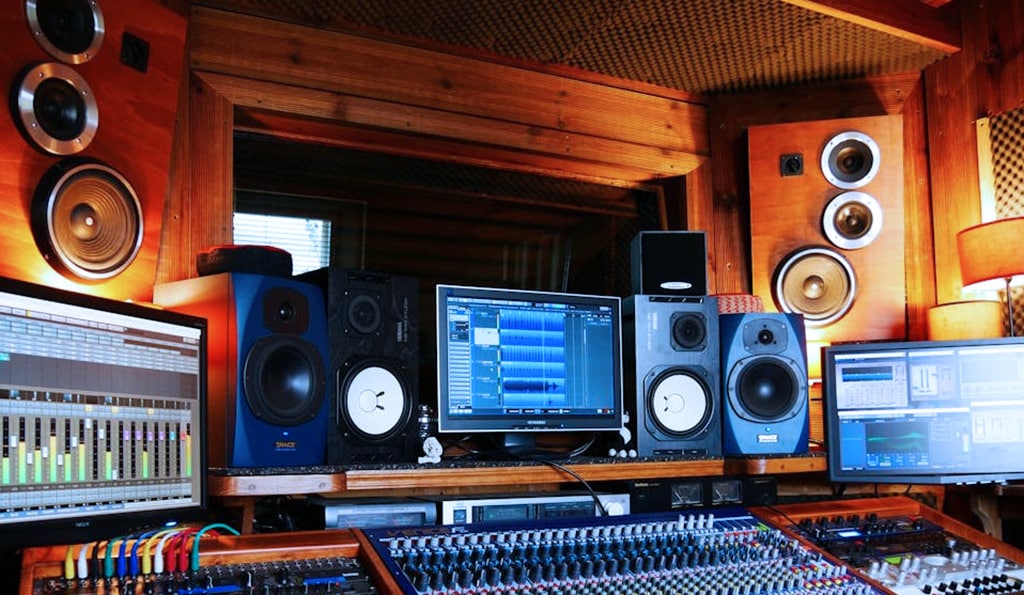Best
Home
Studio monitor
MONITOR
-
Overall: 8/10
-
Best Feature: Bi-Amplified Design
-
TedScore™: 8/10
Best
Affordable
Studio Monitor
-
Overall: 9/10
-
Best Feature: Innovative Design
-
TedScore™: 9/10
Best
Professional Studio Monitor
-
Overall: 10/10
-
Best Feature: Analog and
S/PDIF connectivity -
TedScore™: 10/10
Explore the world of audio production, I often get asked, “What are studio monitors?” These aren’t your average speakers.
Designed for accurate sound reproduction, studio monitors aim to deliver the most authentic representation of audio recordings. This means every beat, melody, and mix is captured in its purest form, unlike regular speakers that color the sound.
Having studio monitors is like having a trusted partner by my side. They’re specifically crafted to provide a flat frequency response, which is crucial for ensuring your mixes sound excellent on any system.
Are you curious about how these powerful tools can elevate your production game? Let’s explore how studio monitors can become an essential part of your audio setup.
Selecting the Right Monitors for Your Studio
When choosing studio monitors, it’s important to consider your studio’s specific needs, the various brands available, and how they align with your budget. These factors will ensure you make the best decision for both accuracy and value.
Analyzing Studio Needs and Constraints
Start by assessing your studio’s size and setup.
In a home studio, nearfield monitors like the Yamaha HS5 are often ideal, offering clear sound without overwhelming the space.
Yamaha HS5
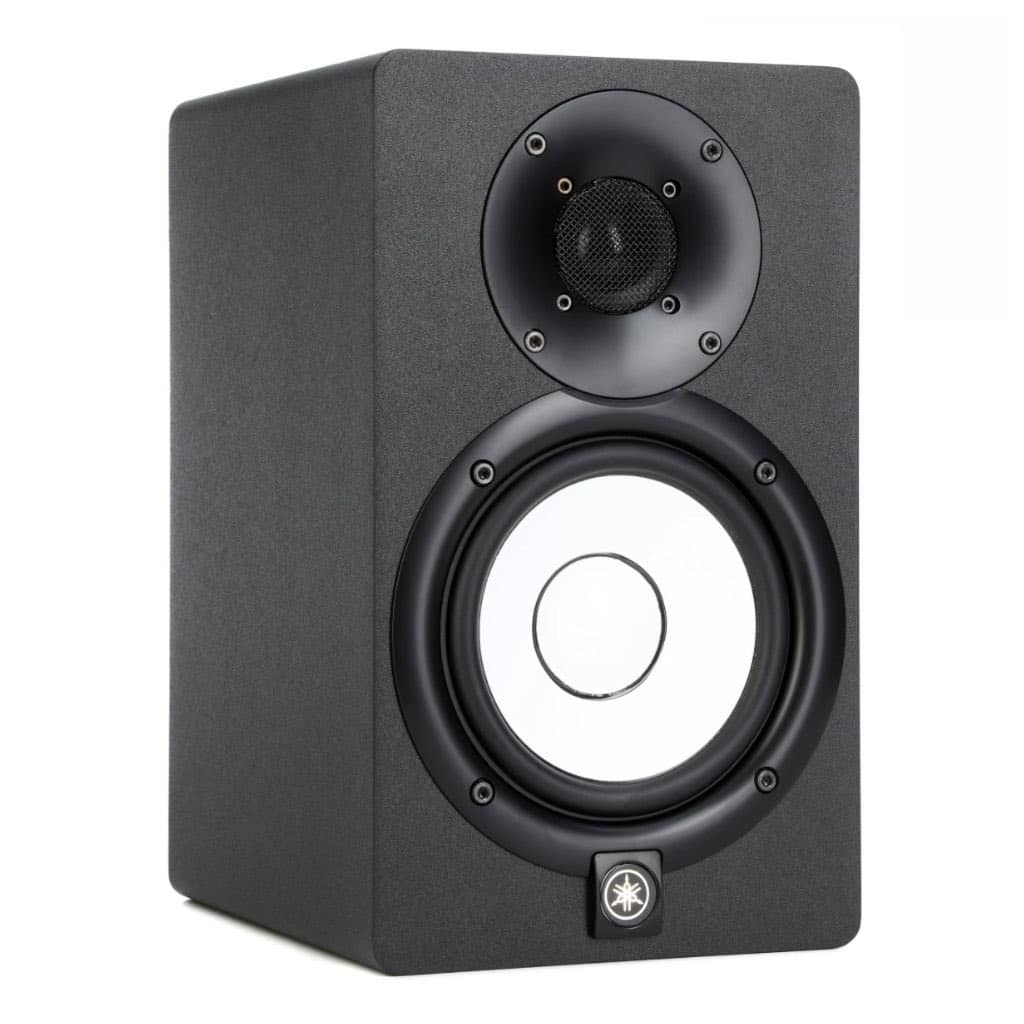
FEATURES: Bi-Amplified Design
OTHER INFO: Room Control and High Trim Response Controls
- Features a bi-amplified design with a 70-watt power amplifier, including a 45-watt low-frequency driver and a 25-watt high-frequency driver
- No Built-In Bluetooth
When you click ‘Check Price’, you’ll see there are loads of great places to buy this item. Our personal favorite is Sweetwater for the US, and Thomann and Gear4Music for the UK & Europe.
They are the largest music retailers, with excellent customer service, competitive prices, really fast shipping, and the longest guarantees.
The professional musician who wrote this article combined many things,
from the product build, manufacturer’s reputation through to feedback
from other users, to create our famous TedScore™.
Think about how many monitors your space can accommodate. Placement is crucial for sound quality, so make sure your setup supports optimal positioning.
Acoustic treatment is another consideration, as a well-treated room enhances monitor performance.
Comparing Popular Studio Monitor Brands
When it comes to brand options, Yamaha, Neumann, JBL, and KRK are some leading names. Brands like Focal and Genelec are known for high-end sound, making them favorites in many professional setups.
The Neumann KH 120 and Genelec 8030C are popular choices for their precision and clarity.
Neumann KH 120
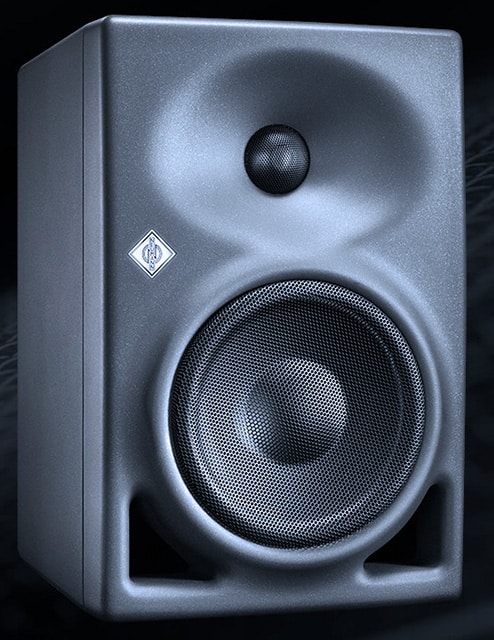
FEATURES: Small-format nearfield monitor with high SPL capability and deep bass extension to 44Hz
OTHER INFO: Analog and S/PDIF connectivity (optional AES67)
- DSP engine for improved performance and automatic room alignment
- May be combined with other KH series speakers in immersive or surround setups
- Higher Price Point
When you click ‘Check Price’, you’ll see there are loads of great places to buy this item. Our personal favorite is Sweetwater for the US, and Thomann and Gear4Music for the UK & Europe.
They are the largest music retailers, with excellent customer service, competitive prices, really fast shipping, and the longest guarantees.
The professional musician who wrote this article combined many things,
from the product build, manufacturer’s reputation through to feedback
from other users, to create our famous TedScore™.
Genelec 8030C
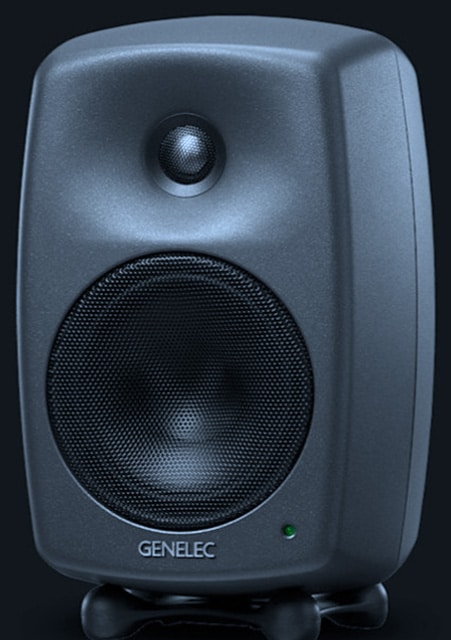
FEATURES: Special low distortion 5" woofer and 3/4" metal dome tweeter deliver fantastic clarity
OTHER INFO:Separate 50-watt bass and treble amplifiers ensure consistent power distribution
- Minimum Diffraction Enclosure delivers focused nearfield sound
- Directivity Control Waveguide enhances dimensional imaging
- Relatively Expensive
When you click ‘Check Price’, you’ll see there are loads of great places to buy this item. Our personal favorite is Sweetwater for the US, and Thomann and Gear4Music for the UK & Europe.
They are the largest music retailers, with excellent customer service, competitive prices, really fast shipping, and the longest guarantees.
The professional musician who wrote this article combined many things,
from the product build, manufacturer’s reputation through to feedback
from other users, to create our famous TedScore™.
JBL 104-BT offers reliable performance for budget-conscious users.
JBL 104-BT Bluetooth Reference Monitor
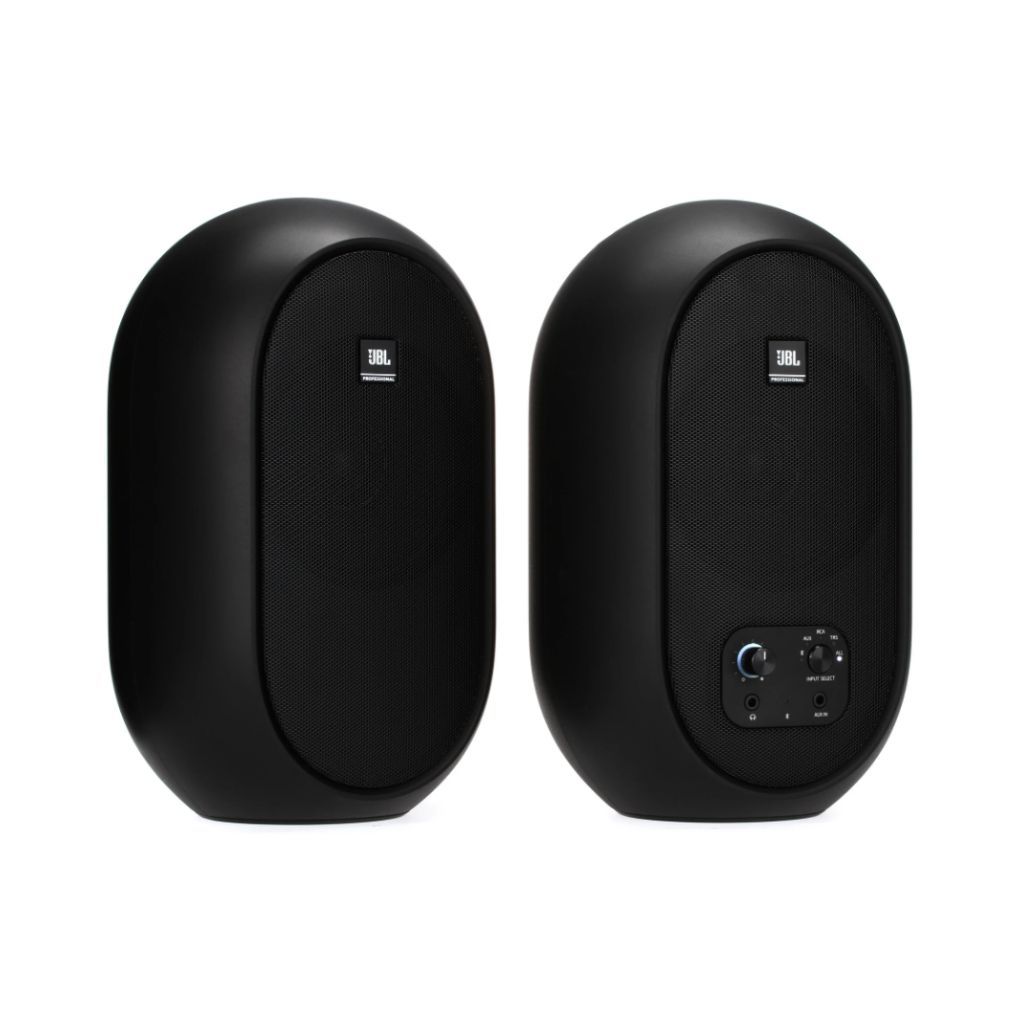
FEATURES: Innovative coaxial driver design and contoured low-frequency port
OTHER INFO: 4.5" low-frequency transducer and .75" high-frequency transducer
- Bluetooth 5.0 compatible for streaming reference mixes
- Sturdy ABS enclosure with metal grill
- Potential latency issues
When you click ‘Check Price’, you’ll see there are loads of great places to buy this item. Our personal favorite is Sweetwater for the US, and Thomann and Gear4Music for the UK & Europe.
They are the largest music retailers, with excellent customer service, competitive prices, really fast shipping, and the longest guarantees.
The professional musician who wrote this article combined many things,
from the product build, manufacturer’s reputation through to feedback
from other users, to create our famous TedScore™.
Investment and Budget Considerations
Remember to factor in potential additional costs, such as stands or cables. It’s often smart to allocate resources evenly across your studio setup. Investing in excellent monitors not only enhances sound quality but also elevates your entire audio production experience.
Fundamentals of Studio Monitors
Studio monitors are specialized loudspeakers engineered to deliver precise sound reproduction. They are vital for professionals in music production, ensuring that every detail of a sound is accurately reproduced.
Let’s break down their essential characteristics
Understanding Studio Monitors
Monitor speakers are designed to provide a flat frequency response, meaning they reproduce sound without adding color or bias. This allows me to hear the audio exactly as it is, which is crucial for making informed mixing decisions.
Studio monitors differ from typical speakers, which often enhance certain frequencies to make music sound more appealing.
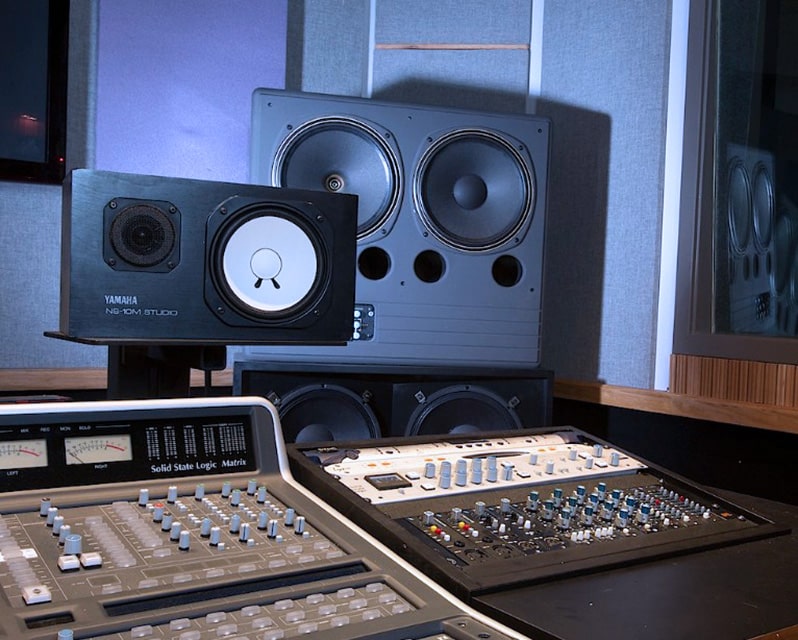
Studio monitors aim for accuracy rather than enhancement. Their design prioritizes clarity, enabling the listener to detect the minute details in a recording. They are essential tools for anyone seeking to achieve professional sound quality in recordings.
Active Versus Passive Monitors
Active monitors have built-in amplifiers. This design eliminates the need to match an amplifier to the speakers, streamlining setup.
They are usually more convenient for a compact studio environment like mine, offering plug-and-play simplicity. On the other hand, passive monitors require an external amplifier.

I enjoy the flexibility of choosing my own amplifier, tailoring the sound to my preferences. While active monitors are convenient, passive ones can be part of a more customized audio setup.
Deciding between the two depends on personal preference and the specific demands of a project.
Speaker Design and Components
Speaker design is integral to how studio monitors perform. Core components include the woofer and tweeter, each responsible for different frequency ranges.
The woofer handles low frequencies, while the tweeter focuses on high frequencies. A well-designed cabinet enhances sound quality by reducing vibrations and maintaining audio integrity.

The speaker enclosure also plays a crucial role. It affects sound projection and overall acoustics, allowing for more accurate sound reproduction. I appreciate the compact design of near-field monitors, which fit perfectly into smaller studio spaces.
By understanding these components, I can better appreciate what makes a studio monitor excel in audio fidelity.
Acoustic Treatment and Monitor Placement
Acoustics and the placement of monitors greatly influence the quality of studio sound. The unique character of the room, my seating arrangement, and the configuration of the monitors all significantly contribute to achieving the optimal audio experience.
Room Acoustics and Treatment
Each room possesses its unique sound characteristics, which can significantly influence the quality of the audio experience.
When setting up, I focus on acoustic treatment to manage reflections and echoes. Here, bass traps, absorption panels, and diffusers become indispensable tools. These tools help tame the room’s natural tendencies.
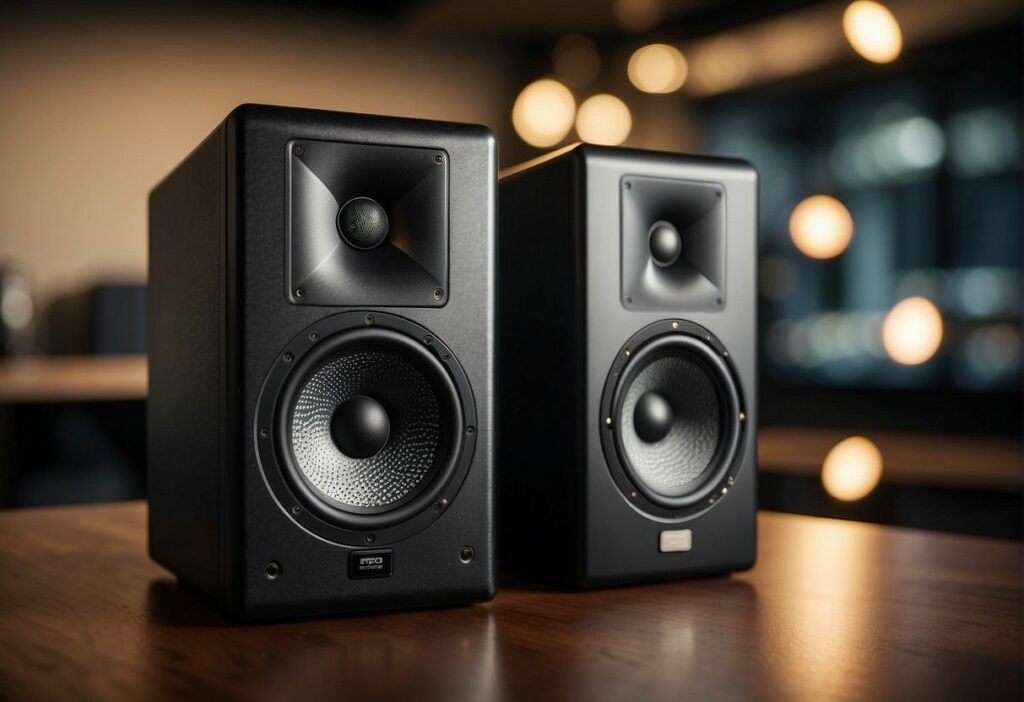
Home studios often have unconventional spaces. I find it crucial to tackle specific trouble spots, especially the low-frequency buildup. It’s more than throwing up some foam panels; it’s about strategically placing these elements to enhance sound clarity.
Optimal Listening Position
I always strive to find the ideal location where the sound resonates perfectly.
This means my head forms an equilateral triangle with the monitors. It ensures balanced sound, letting me hear the mix as intended.

For the best listening position, tilt the monitors towards my ears. This helps ensure all frequencies reach me equally, creating a balanced stereo image.
In both home and professional studios, this optimized setting makes a noticeable difference in my audio work.
Monitor Placement Strategies
How I place my monitors can dramatically affect the sound. Generally, monitors shouldn’t be against walls to prevent reflections that can muddy the sound. Instead, they should be placed at ear level and angled inward to face the listening position directly.
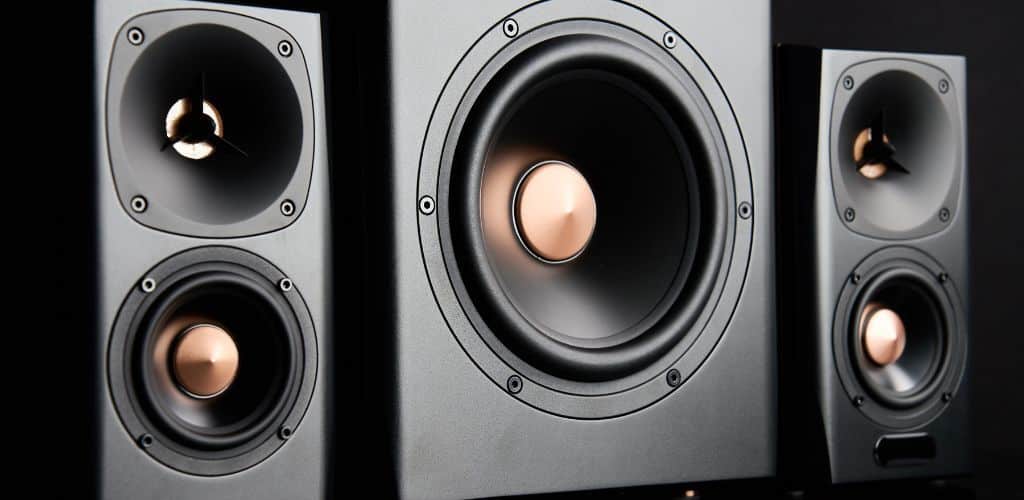
I often use isolation pads beneath monitors—these minimize vibrations and allow for slight adjustments in tilt. Using tools like the Room EQ Wizard, you can help analyse the room and refine monitor placement further.
Whether in a basement studio or a professional environment, these strategies ensure clarity and precision in audio playback.
Connections and Calibration
When setting up studio monitors, understanding both connectivity and calibration is crucial. I’ll cover how to connect your monitors properly and fine-tune them for optimal sound performance.
Studio Monitor Connectivity
Connecting studio monitors can seem a bit complex, but trust me, it’s quite straightforward.
Most studio monitors provide a range of input options.
Balanced inputs, such as XLR and TRS, are usually the best choice because they reduce noise and offer excellent sound quality.
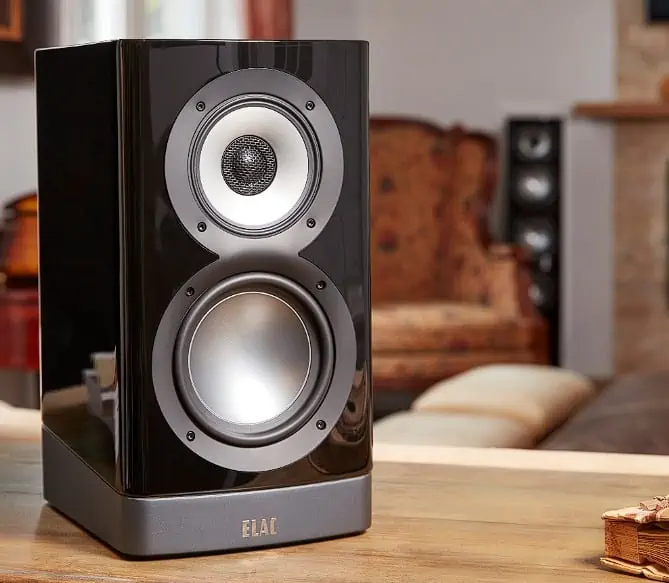
Unbalanced connections, like RCA, might be more susceptible to interference, but they work perfectly fine for many home studios. If you’re connecting to an audio interface, ensure that the connection type matches to avoid any unwanted hums or noise issues. This careful selection will make a big difference in your audio clarity.
Calibration and Room Correction
Getting that perfect sound isn’t just about connections; it’s also about calibration. Calibration ensures that you’re hearing your recordings accurately. Start by using calibration software like Sonarworks or measurement tools, which help tailor the sound to your room’s acoustics.

Room correction is equally essential to account for any anomalies in your listening space. Sometimes, even simple tweaks, like repositioning your monitors or adjusting acoustic treatment, can lead to significant improvements.
These adjustments help negate issues like bass buildup, which can skew your perception of audio signals.
Calibration and Room Correction
Finally, let’s talk EQ settings. Depending on your monitors, you’ll likely have some options for EQ adjustments on the back panel. It’s essential to tweak the EQ based on your room and setup.
Start with a flat EQ setting and then make small changes as necessary. Some monitors might offer specific adjustments for treble or bass, allowing fine-tuning to your room’s response.
These EQ settings ensure your mixes translate well across different systems, making your music sound its best everywhere.
What are studio monitors?
Insights:
Studio monitors are specialized speakers designed for critical listening in professional audio environments, such as recording studios. Unlike hi-fi speakers, which enhance sound for casual listening, studio monitor speakers provide a flat frequency response to ensure accurate sound reproduction.
There are two main types of studio monitors: active and passive speakers, with active studio monitors containing built-in amplification for convenience.
Dedicated monitor speakers are essential for sound engineers and producers who need to make precise mixing and mastering decisions. While casual listeners may prefer the warmth and color of hi-fi speakers, those working in music production benefit from the clarity and neutrality of studio monitors.
Ultimately, investing in quality studio monitors can significantly improve the audio experience in any recording studio.
There’s more…
If you’re looking for budget-friendly options without sacrificing sound quality, check out the 5 Cheap Studio Monitors for great recommendations.
FAQ's
The purpose of studio monitors is to provide accurate and uncolored sound reproduction, allowing audio professionals to make precise mixing and mastering decisions.
The main difference between speakers and studio monitors is that studio monitors are designed for accurate sound reproduction and flat frequency response, making them ideal for professional audio work, while regular speakers often enhance certain frequencies for a more enjoyable listening experience.
Yes, you can use studio monitors as regular speakers, but they are designed for accurate sound reproduction rather than enhanced listening experiences, which may result in a different sound profile compared to typical consumer speakers.
Using studio monitors for TV can provide high-quality sound, but they may not deliver the same immersive experience as home theater speakers designed specifically for cinematic audio.


